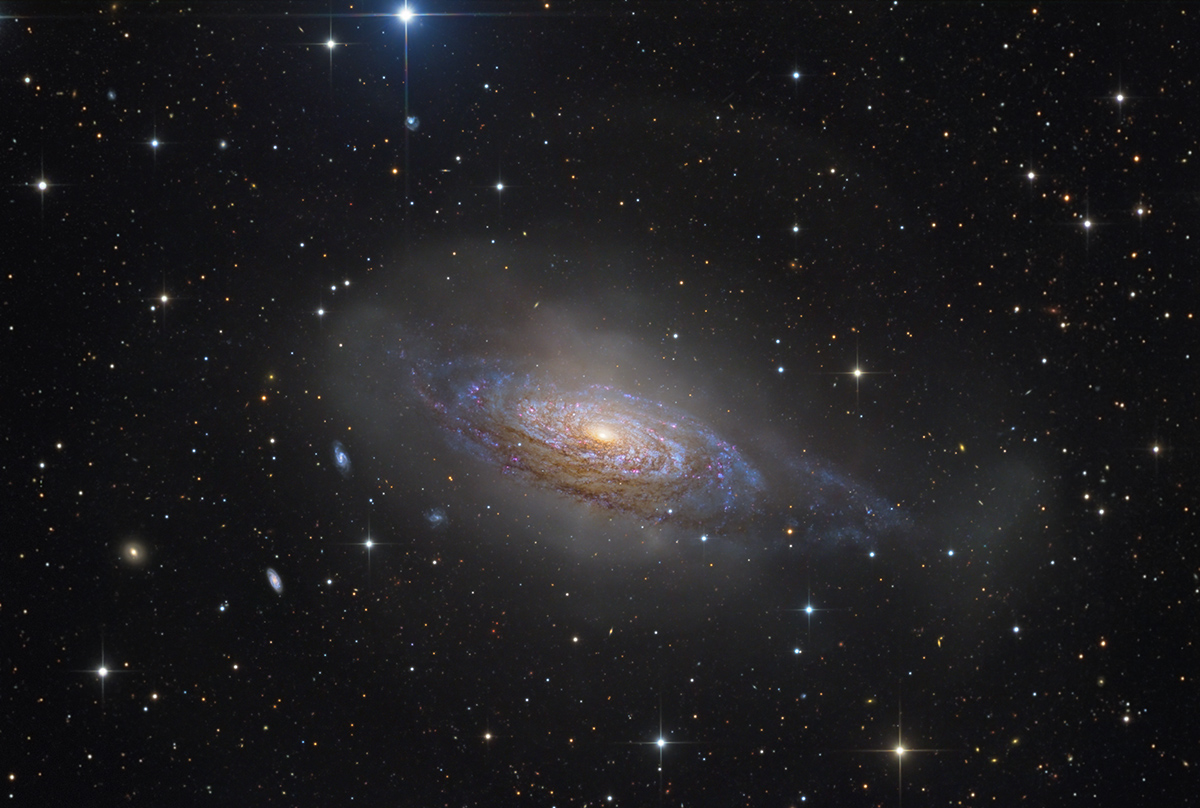
Higher resolved image / höher aufgelöstes Bild (2200 x 1481 Pixel)

|
Type: SBbc, distance ~ 11Mpc/37MLy |
|
2' |
|
(c) 2005,2024 All astro photo images are copyrighted. They may not be used or reproduced without explicit written permission from the authors.
About this Image / Über dieses Bild
| CCD: | ST10 XME |
| Image Type, Orientation: | L-RGB Composite, North is at 3:00h |
| Exposure time: | L: 12x600 sec. 1x1 bin, R,G,B: 3x600 sec. 2x2 bin |
| Exposure date: | May, 7th, 2005 |
| Location: | Capella Observatory at Amani Lodge, Kupferberg near Windhoek, Namibia |
| Filter: | FR03 + Astronomik Typ II LRGB filters |
| Instrument: | Ganymed 60cm-Hypergraph in primary focus, f=1800 mm |
| Image seeing (FWHM): | 3.4" |
| Photographer: | Josef Pöpsel, Beate Behle |
| Remarks: |
The shape of NGC 3521 seems to be very similar to the shape of M63 at first glance. Looking to a deep exposure like the one above (after all two hours for the luminance exposure at f3), the outer shells catch the viewers eye. They suggest on a collision with another galaxy in former times. In addition to the image of the galaxy itself the exposure "rewarded" us with seven additional special features: three minor planets and four quasars with a red shift bigger than one. Two of the three minor planets are not visible in the image above but clearly visible when animating the different luminance exposures. These two are 1999 XD14 (20 mag) and 2000 BU41 (22.3 mag) . More informations of all minor planets can be found here. |
|
|
|
| Bemerkungen: |
Die Form von NGC 3521 erinnert auf den ersten Blick stark an die von M63. Bei einer tiefen Aufnahme wie der obigen (immerhin zwei Stunden allein für die Luminanzaufnahme bei f/3) fallen aber die äußeren Schalen auf, die auf eine vergangene Kollision mit einer anderen Galaxie hinweisen. Außer mit dem Bild der eigentlichen Galaxie "belohnte" uns die Aufnahme mit sieben weiteren Besonderheiten: drei Kleinplaneten sowie vier Quasare mit einer Rotverschiebung größer als Eins. Zwei der drei Kleinplaneten sind auf dem Gesamtbild nicht zu sehen, aber eindeutig bei Animation der einzelnen Luminanzbilder zu erkennen. Es handelt sich hierbei um den 20 mag Hellen KPN 1999 XD14 und um den 22,3 mag hellen KPN 2000 BU41. Nähere Informationen zu allen KPNs finden sich here. |
Back to the Galaxies' Overview / Zurück zur Galaxien-Übersichtsseite